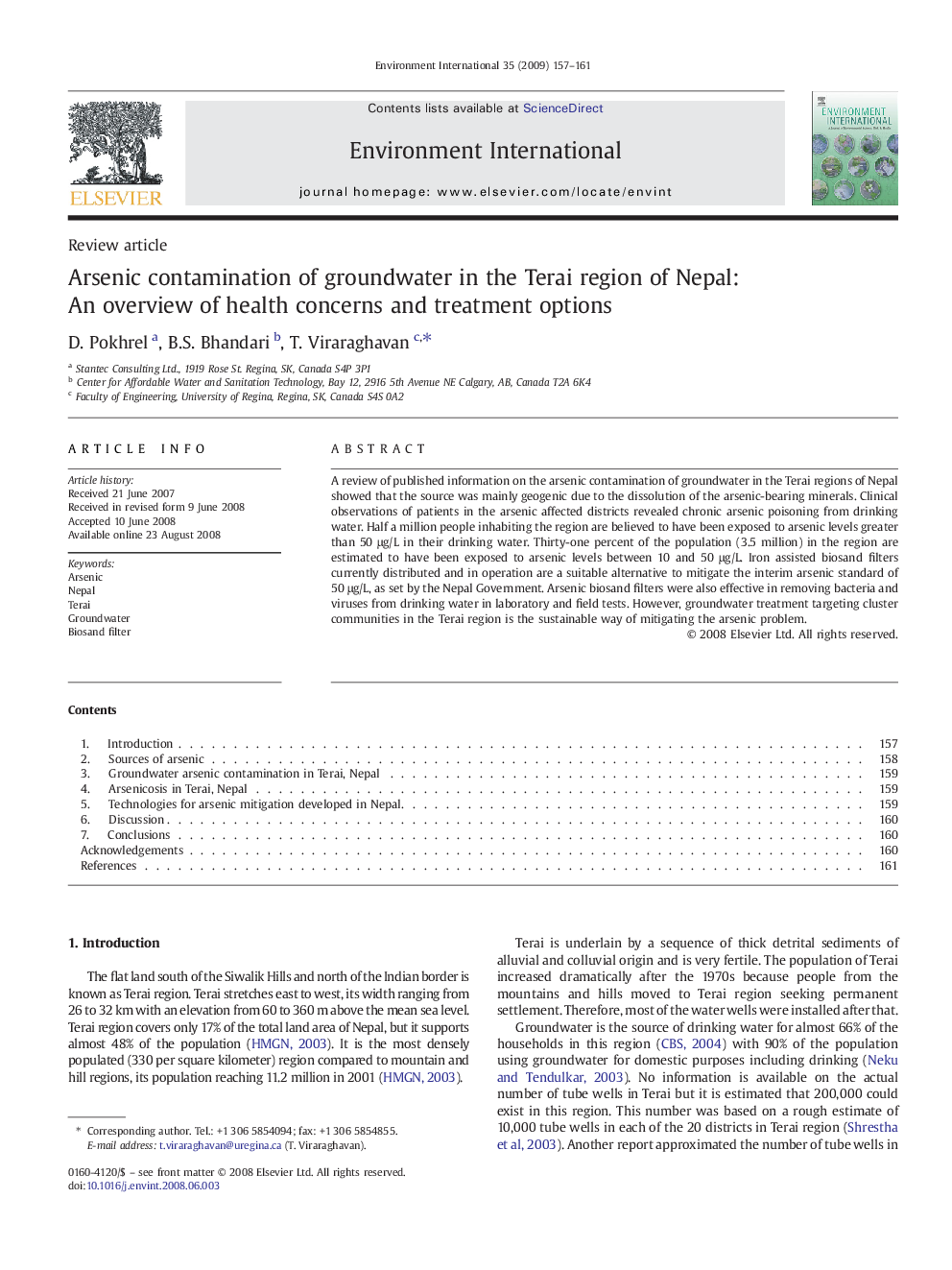| Article ID | Journal | Published Year | Pages | File Type |
|---|---|---|---|---|
| 4423458 | Environment International | 2009 | 5 Pages |
A review of published information on the arsenic contamination of groundwater in the Terai regions of Nepal showed that the source was mainly geogenic due to the dissolution of the arsenic-bearing minerals. Clinical observations of patients in the arsenic affected districts revealed chronic arsenic poisoning from drinking water. Half a million people inhabiting the region are believed to have been exposed to arsenic levels greater than 50 μg/L in their drinking water. Thirty-one percent of the population (3.5 million) in the region are estimated to have been exposed to arsenic levels between 10 and 50 μg/L. Iron assisted biosand filters currently distributed and in operation are a suitable alternative to mitigate the interim arsenic standard of 50 μg/L, as set by the Nepal Government. Arsenic biosand filters were also effective in removing bacteria and viruses from drinking water in laboratory and field tests. However, groundwater treatment targeting cluster communities in the Terai region is the sustainable way of mitigating the arsenic problem.
